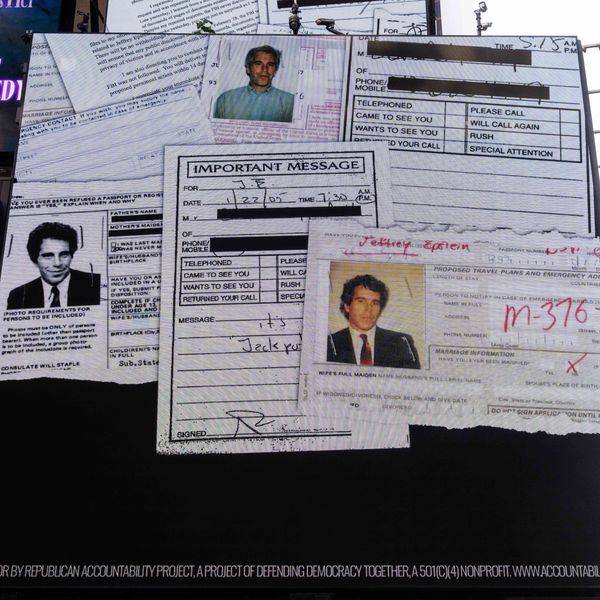Given access to a large trove of the
NSA documents leaked by whistleblower
Edward Snowden, the
New York Times has
published an aerial view of the agency--cataloging numerous and varied surveillance programs--which the paper says shows that President Obama and other high-ranking officials who defend the agency by citing its counterterrorism credentials are using "a misleadingly narrow sales pitch for an agency with an almost unlimited agenda."
Though critical and informative on many levels, however, the approach and perhaps unintended consequences of the story raises some questions.
According to the Times, "the scale and aggressiveness" of the NSA's global spying apparatus detailed in the Snowden documents "are breathtaking."
And in three key paragraphs, the Times rattled off a series of acronym-laden programs and clandestine cyber-operations conducted by the NSA:
The agency's Dishfire database -- nothing happens without a code word at the N.S.A. -- stores years of text messages from around the world, just in case. Its Tracfin collection accumulates gigabytes of credit card purchases. The fellow pretending to send a text message at an Internet cafe in Jordan may be using an N.S.A. technique code-named Polarbreeze to tap into nearby computers. The Russian businessman who is socially active on the web might just become food for Snacks, the acronym-mad agency's Social Network Analysis Collaboration Knowledge Services, which figures out the personnel hierarchies of organizations from texts.
The spy agency's station in Texas intercepted 478 emails while helping to foil a jihadist plot to kill a Swedish artist who had drawn pictures of the Prophet Muhammad. N.S.A. analysts delivered to authorities at Kennedy International Airport the names and flight numbers of workers dispatched by a Chinese human smuggling ring.
The agency's eavesdropping gear, aboard a Defense Department plane flying 60,000 feet over Colombia, fed the location and plans of FARC rebels to the Colombian Army. In the Orlandocard operation, N.S.A. technicians set up what they called a "honeypot" computer on the web that attracted visits from 77,413 foreign computers and planted spyware on more than 1,000 that the agency deemed of potential future interest.
However, despite the scale and scope of the Times' reporting on the documents, it was difficult for some to avoid the feeling that part of the exhaustive review was designed to scuttle future--perhaps more detailed--reporting on the same programs.
Unlike most other reporting so far done on the leaked NSA documents, which seem to have followed a more deliberate kind of approach by looking at one surveillance program or revelation at a time, the decision to publish a single feature-length piece on numerous programs raised the ire of some.
As the transparency advocacy group Wikileaks responded:
The reference is to former Bobby Inman, who directed the NSA himself in the late 70s and early 80s. For those who think the Times' rapid-fire review of the Snowden documents might, in fact, serve the interests of the agency over the public, Inman's unsolicited advice to his former employer serves as an interesting clue.
"My advice would be to take everything you think Snowden has and get it out yourself," Inman told the Times. "It would certainly be a shock to the agency. But bad news doesn't get better with age. The sooner they get it out and put it behind them, the faster they can begin to rebuild."
_______________________________



